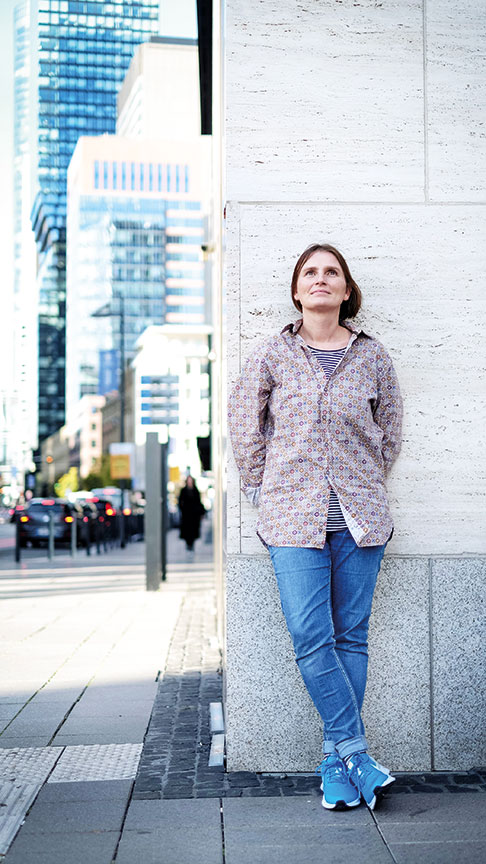Interview: Matthias Vogel
Making cities crisis-resilient
At the University of Bonn, meteorologist and DAAD alumna Dr Lisa Schielicke studies how to mitigate the impacts of climate change on cities.
Dr Schielicke, unbearable heat in the summer, and indeed torrential rainfall and flooding, are signs of ever more extreme weather events that can be observed almost all over the world. What is going on just now?
Schielicke: There is a general agreement in the scientific community that extreme heat, in particular, is one of the consequences of anthropogenic climate change. We are observing global warming, and mean temperatures are rising every month. With extreme temperatures of 40 degrees in the shade, we in Germany will also have no choice but to install air-conditioning in buildings such as hospitals, care homes and schools, but also in residential buildings, as has long been the norm in the southern states of the USA, for instance. We must prepare ourselves for prolonged droughts, which includes the risk of forest fires, as well as for more intensive periods of rainfall.
Which ways of countering the effects of climate change, especially in cities, are you exploring in your research work?
Schielicke: All I can do in my research is assess the risk of what might happen and roughly when if we continue as we have been doing to date. For example, calculating particle paths allows us to estimate the origin of air currents and the processes that such parcels of air undergo during their journey. These studies show us that heatwaves consist, among other things, of air that moves slowly and spends several days close to the ground, where it can warm up a lot. As far as urban planning is concerned, the conclusion is that we need more greenery and more city trees because sealed surfaces store heat. Fresh-air corridors allow better air circulation, helping to cool down the city. Buildings must not be erected in such corridors, nor in areas already at risk – let us not forget the flooding in Germany’s Ahr Valley in July 2021. Cities should be made flood-proof and rainwater retention basins installed. For this to happen, it is essential for such conclusions to be heard by the right people. We will certainly need to do a lot more to ensure that the urgent need for action is also recognised and taken into consideration at the political level.
“Climate change is a global problem that we can only resolve internationally.”
On a DAAD research scholarship for postdocs, you conducted research at Texas Tech University in Lubbock in the USA on so-called supercells – thunderstorms with a rotating updraft. What can we learn from such cells?
Schielicke: Supercells are thunderstorm cells that can be accompanied by high-impact weather, e.g. hail, heavy rainfall and powerful gusts of wind up to tornado strength. Simulations of supercells help us better understand how these events come about, for not every supercell creates a tornado. Ultimately, this enables us to assess the risk of such events occurring.
How important is international and interdisciplinary collaboration in this regard?
Schielicke: Climate change is a global problem that we can only resolve internationally. Here in Bonn we are studying European heatwaves and cooperating closely with the FU Berlin and other European universities. Interdisciplinary collaboration is also extremely important. I regard the atmosphere firstly as a system in itself, though there are significant interactions with the soil and soil humidity levels, especially when it comes to heatwaves. If soils are very dry, the layer of air above them can warm up to a much greater extent, which can lead to even more extreme temperatures. There is a direct link to agriculture and forestry sciences here. When we think about heavy rainfall events, we must always give consideration to water drainage. In other words, our work ties in with hydrology, but also with urban planning. When we look at protecting people from heat, especially in buildings or cities, there is already an overlap with engineering sciences. The energy and transport sectors are likewise heavily influenced by the weather. In fact, I can think of no area of life in which the weather is not a factor. We need this exchange with other scientists in order to find out who is giving thought to which issues and where we might form networks. —


